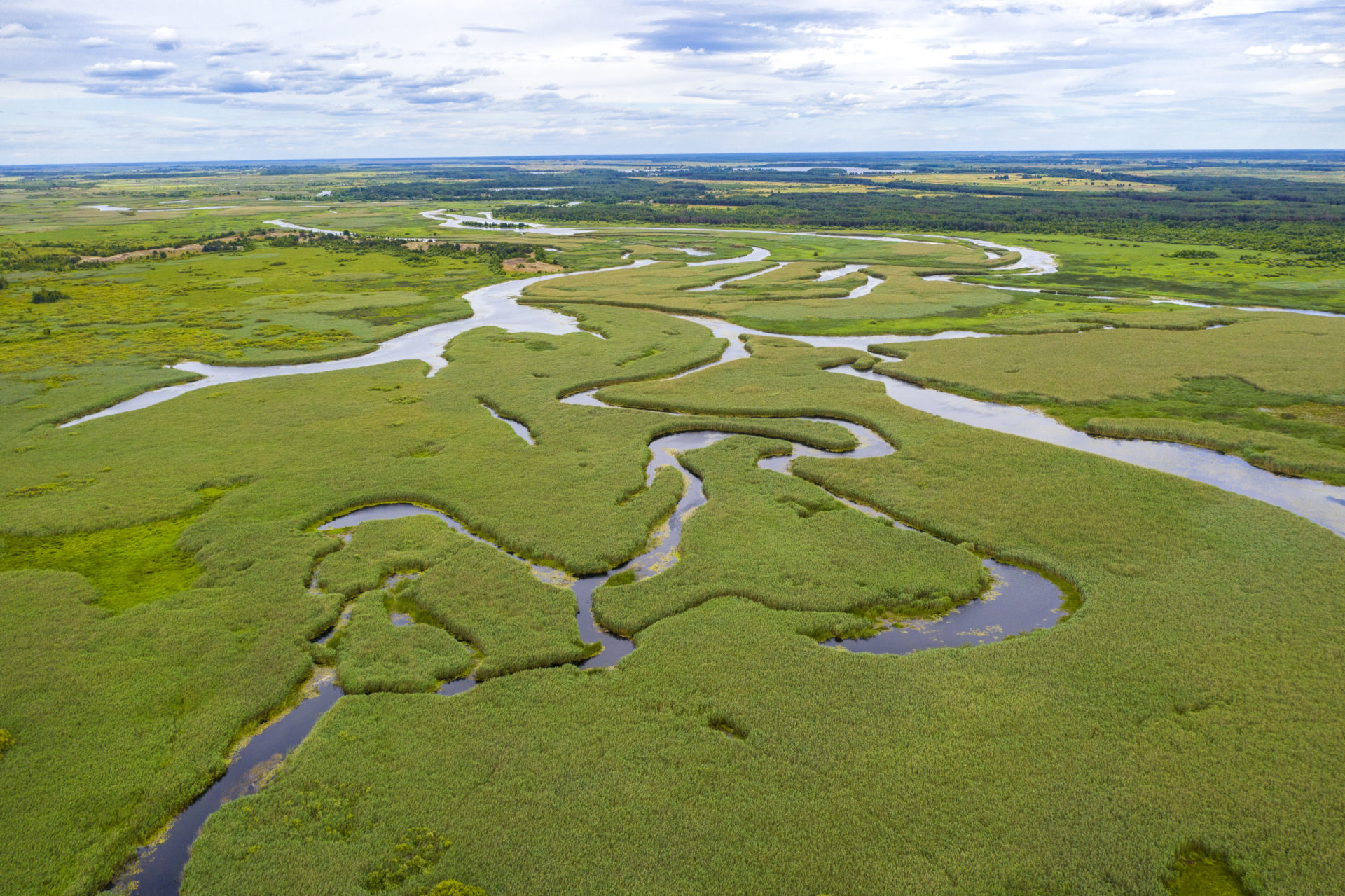In early January, the Ukrainian Ministry of Infrastructure announced that the dredging of the Pripyat river in Ukraine is projected to start as soon as the water level is high enough for shipping. However, as the spawning of fish started, any work on the river is forbidden as of March 20th. Modernization measures on the floodgates of the Dnieper cascade have already begun. This is a first step to realize the E40 waterway in Ukraine.
The Pripyat river would need to be as wide as 35 m and as deep as 1,60 m, in order to be navigable. Sediment layers of roughly 20-90 cm would need to be removed. Along an 18 km long section close to the border of Belarus, around 100,000 m3 of soil would need to be removed alone. Despite that, dredging is planned for the entire Pripyat river in Ukraine, which has a total length of 64.5 km. The dredging works are expected to cost almost 12 million UAH (around 410,000 EUR).
Dredging could threaten human health of millions of people
The lower part of the Pripyat river runs through the Chernobyl exclusion zone. After the 1986 Chernobyl nuclear disaster, the area is still heavily contaminated with radioactivity. Dredging could expose millions of people to dangerous levels of radiation. The government of Ukraine did not consider this severe threat when politically approving the waterway project. Before any construction works within the area start, the impacts on the environment as well as the distribution of contaminated material need to be assessed in detail.
Against national legal requirements
An Environmental Impact Assessment for the E40 waterway project in Ukraine has not been conducted, even though this is a legal requirement as laid down in the national Water Code and the Environmental Impact Assessment Law. Legally speaking, the dredging of the Pripyat river is not permitted. The public was not properly and transparently informed about the project either. The Ukrainian Ministry of Infrastructure published contradictory statements about the purpose of the dredging of the Pripyat river: first in the framework of the construction of the E40 waterway and two months later refusing a connection between the dredging and the waterway.
Protected areas of international importance at risk
The E40 waterway construction works would have devastating impacts on nature conservation in Ukraine. Various conservation areas of international importance would be negatively affected. The Pripyat river in Ukraine belongs to the Emerald Network of Areas of Special Conservation Interest. The Chernobyl Radiation and Ecological Biosphere Reserve is located within this area and home to more than 100 species of international importance. 80 species living in this protected area are listed under the Bern Convention on the Conservation of European Wildlife and Natural Habitats and 37 other species are listed in the IUCN Red List of Threatened Species. The site provides habitats for large predators such as brown bears, lynxes or wolves as well as ungulates like moose, deer or roe deer. The rare and endangered Przewalski’s horses live in the Chernobyl exclusion zone as well. They are the last remaining subspecies of wild horse. The E40 waterway would destroy protected areas and impact the survival of millions of animals.
This all shows: the planned dredging activities in Ukraine threaten Polesia’s nature and people. We need to save Polesia, Europe’s Amazon.
Further information:

